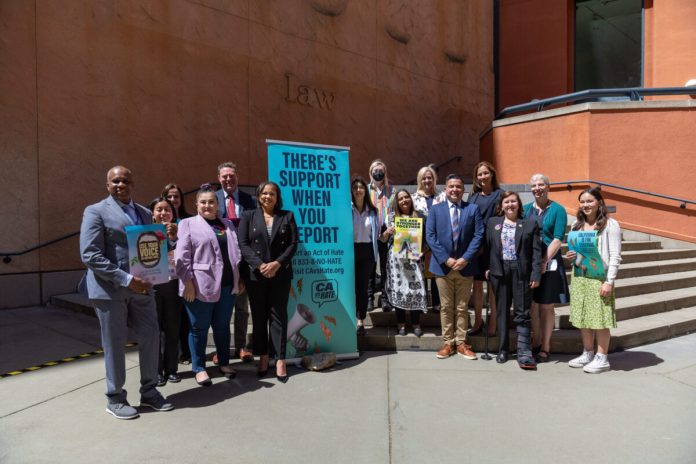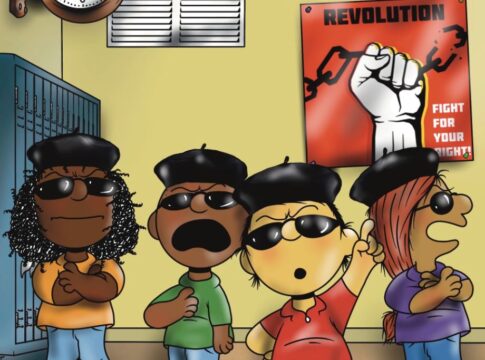Race and ethnicity are the largest motivators of hate crimes in California, followed by gender and sexual orientation.
by Sunita Sohrabji, originally published on Ethnic Media Services
SACRAMENTO, California — In the first year after its launch, the California vs. Hate initiative has provided support services to 1,020 victims of hate crimes and incidents.
At a press briefing here May 20 morning, the California Civil Rights Department, which heads up the multi-year initiative, unveiled new data and findings from the initiative’s first year in operation. The program’s multilingual hotline — 833-8-NO-HATE, or 833-866-4283 — received approximately 2,000 calls from 80% of California’s counties. The hotline offers services in 200 languages.
Incidents can also be reported in one of 15 languages on the website.
LATEST STORIES
Support Services
Four out of six callers experiencing hate asked for and received support from a variety of services including legal and financial aid, and culturally/linguistically-appropriate counseling, said Kevin Kish, director of the California Civil Rights Department.
Community-based organizations in California pushed for the creation of the program, and shared the needs and priorities of the diverse communities they serve, said Kish. Many CBO leaders spoke at the press briefing, including Mina Fedor, founder and executive director of AAPI Youth Rising and Ariel Bustamante from the Los Angeles LGBT Center.
LGBTQ Youth Targeted
“Identity based bullying is an all too real part of growing up in America,” said Fedor, who spoke of kids going to school armed with bats to protect themselves, as former President Donald Trump blamed Chinese Americans for the Covid-19 pandemic.
Bustamante spoke of Nex Benedict of Oklahoma and Ethan Henderson of Arkansas, two non-binary teens who died because of their identities. “These stories are not new. They are not isolated. and they aren’t limited to rural states,” she said, noting an incident in Lake Arrowhead, California, in which Laura Carleton, the owner of the Mag Pi clothing store, was killed by suspect Travis Ikeguchi for displaying a rainbow flag during Pride month.
In another incident handled by the Center, a transgender woman was terrorized by her neighbor. And Bustamante has received calls from terrified parents of kids targeted at school for their perceived sexual orientation.
Will Funding Continue?
The future of the initiative is tenuous. California vs. Hate initially received $10 million from the AAPI Equity Fund, and another $1 million from the federal Jabara-Heyer No Hate Act. Given the state’s $44 billion deficit, it is unclear whether funding for the program will continue.
“Hate is not new,” said Becky Monroe, deputy Director of Strategic Initiatives and External Affairs. “We have to recognize that this is an issue that has been targeting communities for generations.”
“Many of the communities who are most targeted now have never been listened to about these issues,” she said. “We still have more work to do. When I look at the data and I see a county or a community that hasn’t reported hate, we take that as our responsibility to do a better job to reach that community.”
Who Was Left Out?
Monroe said Indigenous people in California have historically been the targets of hate crimes, but have not reported them. The CRD, in partnership with the Shingle Springs branch of Miwok Indians, is working on outreach efforts.
Most incidents occurred at or near the home, or at the workplace. The majority of incidents reported were of discriminatory treatment, including verbal harassment and slurs.
Data
Race and ethnicity was the largest motivation for bias attacks: 35% of reports were in this category. Black victims were overwhelmingly targeted — 26.8% — while 15.4% of victims were Latino, and 14.3% were Asian Americans. Gender identity and sexual orientation were also big motivators for hate crimes and incidents. Transgender people and LGBTQIA folks made up the largest number of victims in this category. Hate crimes against Jewish people were also prevalent in the data.
The state is launching a partnership with UC Berkeley’s Possibility Lab for better data collection and analysis. It is also exploring the possibility of a text-based reporting option to support access to the hotline.
Victim’s Compensation
Lynda Gledhill, executive officer for the California Victim Compensation Board, spoke at the May 20 press conference, noting that victims of hate crimes are eligible for financial support, including medical and dental treatment, mental health services, income loss, residential security, and relocation. Last year, the Board received 39,000 applications and paid nearly $47 million to reimburse victims of crime in all categories, including hate crimes.
Rebecca Wendt, California’s Deputy State Librarian spoke about collaboration with ethnic media. “Ethnic media outlets serve millions of Californians, acting as a lifeline to the state’s diverse communities. By partnering with these trusted media outlets, we are getting the word out about the new and expanded resources available,” she said.
AsAmNews is published by the non-profit, Asian American Media Inc. Follow us on Facebook, X, Instagram, TikTok and YouTube. Please consider making a tax-deductible donation to support our efforts to produce diverse content about the AAPI communities. We are supported in part by funding provided by the State of California, administered by the California State Library in partnership with the California Department of Social Services and the California Commission on Asian and Pacific Islander American Affairs as part of the Stop the Hate program. To report a hate incident or hate crime and get support, go to CA vs Hate.







